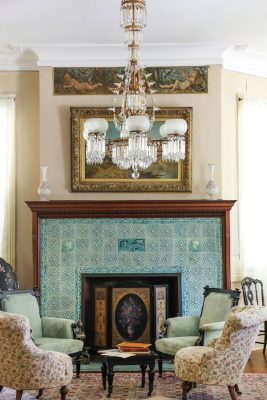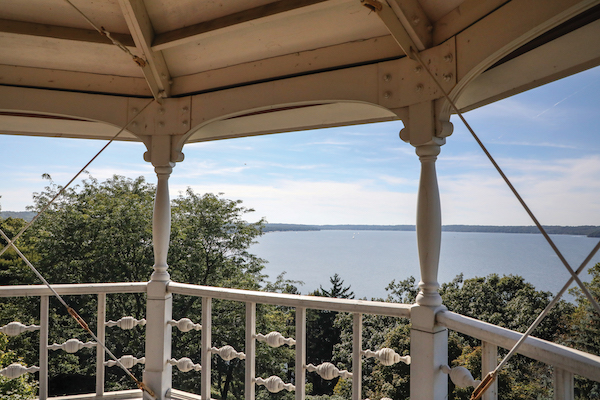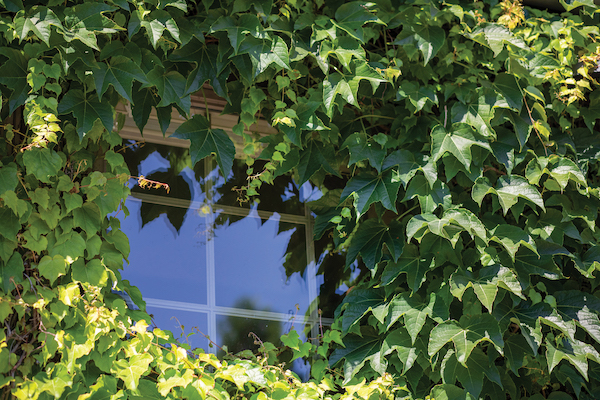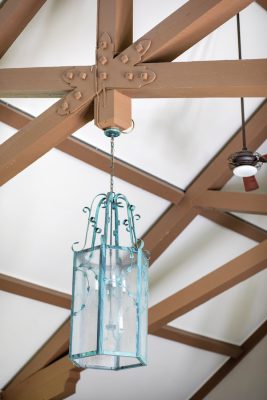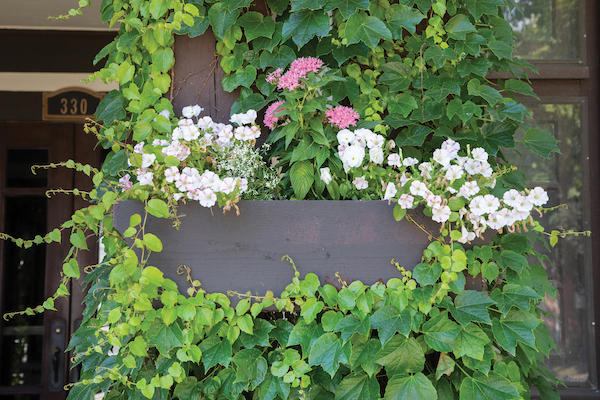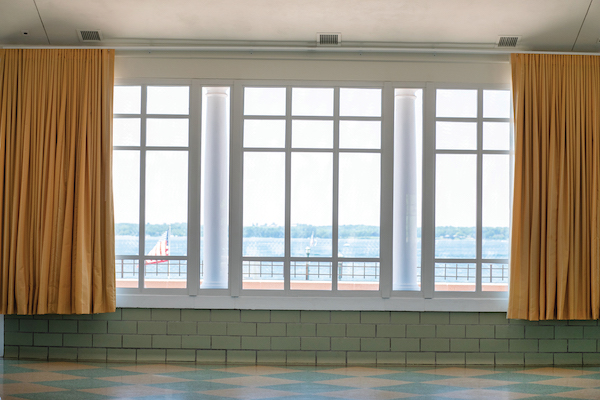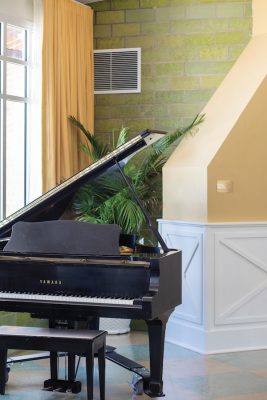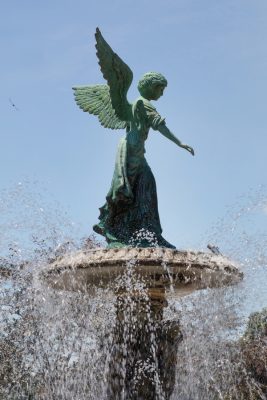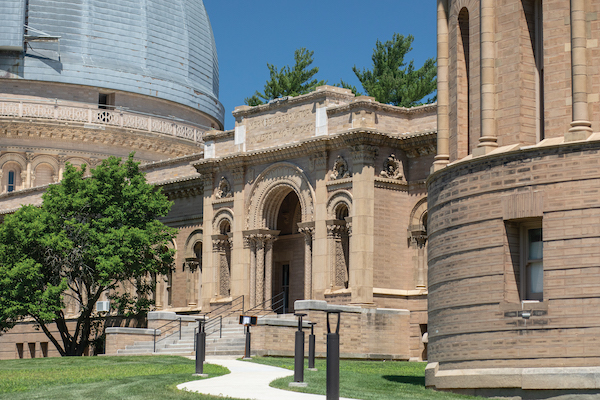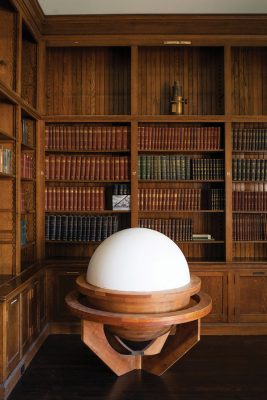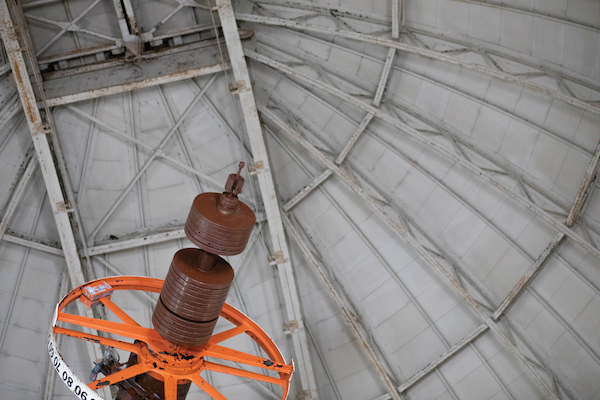By Anne Morrissy | Photography by Shanna Wolf
Since debuting 25 years ago, At The Lake has remained committed to sharing the rich and fascinating history of the Geneva Lake area, and we particularly love to explore exceptional historic architecture, including many examples designed by genre-defining architects. In this portfolio, we set out to highlight four of the area’s most iconic structures, buildings that help to define Lake Geneva visually and connect us with those who have come before. Thanks to the stewardship and combined efforts of community members, local governments and passionate nonprofit organizations, these four landmarks have been significantly preserved or restored, ready to capture and inspire the imaginations of many generations to come.
Horticultural Hall
Opened in June of 1912, Lake Geneva’s Horticultural Hall was originally constructed for the use of the Lake Geneva Gardener’s and Foreman’s Association, a professional organization for the groundskeepers of the estates around the lake. The building was designed in the English Arts and Crafts Style by architect Robert Closson Spencer Jr., to evoke an English guild hall and garden. Over the years, the space became an integral civic building, used for a wide variety of events, fundraisers, meetings and celebrations. It even hosted presidential candidate John F. Kennedy when he was campaigning in Lake Geneva in 1960! Restoration efforts over the past 15 years have included a roof replacement using tiles imported from France, the installation of a commemorative brick walkway, painting updates, and the addition of a gate and walkway into the garden itself. Today, Horticultural Hall and its impressive gardens remain a timeless piece of Lake Geneva.
Black Point Estate
This beautiful Queen Anne-style Victorian home, originally named Die Lorelei, was built in 1888 by Chicago beer baron Conrad Seipp and his wife Catharina as a summer residence. It remained in the family for over 100 years, and subsequent generations made very few changes to the home, preferring to enjoy an old-fashioned version of life at the lake. In 2005, Seipp’s great-grandson William O. Petersen donated the land, the home and its contents to the Wisconsin Historical Society (WHS), for use as a museum. Today, the Black Point Estate and Gardens tour, offered in conjunction with Lake Geneva Cruise Line, is a must-see for history and architecture buffs from around the country. Recently, the WHS has undertaken a restoration of the property’s gardens and landscaping, drawing inspiration from plans developed by landscape designer Olof Benson in 1900.
The Riviera
Originally built in 1932, part of a civic project to provide work for local builders and craftsmen during the Great Depression, Lake Geneva’s Riviera has become one of the most recognizable landmarks on the lake today. The upstairs ballroom, with its unmatched, wraparound lake views, has played host to such famous musicians as Dave Brubeck, Louis Armstrong and Stevie Wonder. Today, the building is maintained by the city of Lake Geneva, which rents the ballroom for the use of weddings, parties and fundraisers. In 2021, extensive restorations to the Riviera building included: replacing the roof, updating and replacing the building’s infrastructure systems, and replacing the ballroom’s terrazzo floor and plaster ceiling, among many other updates.
Yerkes Observatory
Since 1895, the large dome of Yerkes Observatory has risen over the lake in Williams Bay, defining the distinctive horizon of the lake’s west end. The building, designed by famed Chicago architect Henry Ives Cobb, was constructed to house the then-newly-formed Department of Astrophysics at the University of Chicago, and still to this day contains the largest reflecting telescope in the world. As an extension of the world-famous university, over the years Yerkes Observatory hosted a wide range of the world’s greatest astronomers and scientists, including, famously, Albert Einstein. In May of 2020, the university sold the building and its contents to the Yerkes Future Foundation, a nonprofit organization devoted to preserving the building and sharing the history of this groundbreaking institution. The foundation recently completed the first phase of an ambitious, multi-million-dollar restoration, reopening Yerkes Observatory for public tours once again.


